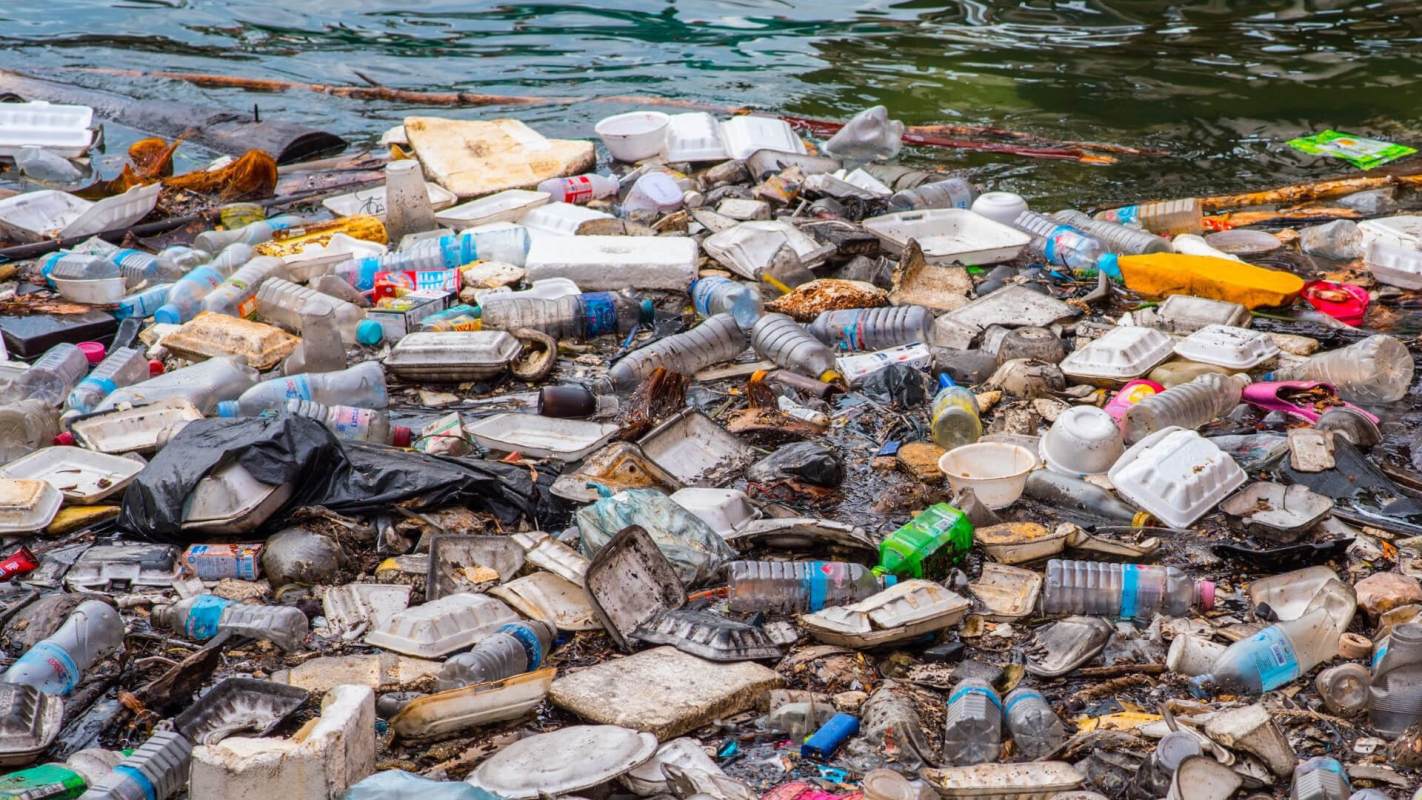A relatively uncharted island entirely made of trash, the Great Pacific Garbage Patch is an enigma. Still, reducing its size is an even bigger mystery.
The Ocean Cleanup is an organization using high-tech tools to remove trillions of pieces of plastic pollution and other trash that make up the Great Pacific Garbage Patch — but what happens to this waste once it gets collected from the ocean?
What is The Ocean Cleanup?
The Ocean Cleanup is a nonprofit that uses various technologies to collect trash from our oceans and also intercept it in rivers before it enters our oceans.
The Ocean Cleanup's System 002, also known as "Jenny," is a focal point for supporters and critics — more on those criticisms in a moment. Jenny uses two fuel-powered ships to tow a U-shaped catchment system across the ocean's surface. Once Jenny fills up with debris, it brings the garbage to a larger boat where it's unloaded and carried ashore.
The team is transitioning to System 03 (they switched to a single zero since they no longer think they'll need 100-plus units), nicknamed "Josh," to allow for even bigger cleanups. The current record is over 40,000 pounds. And Josh includes what they call "MASH" — the marine animal safety hatch, which allows sea life to escape without compromising how much total trash they can collect.
How big is the Great Pacific Garbage Patch?
The Great Pacific Garbage Patch (GPGP) is a floating vortex of debris in the North Pacific Ocean. It spans 1.6 million square kilometers (or over 600,000 square miles) from California to Japan with Hawaii in the middle. The trash found in the GPGP varies in type and size, but the majority of it is made of plastic.
Microplastics — tiny pieces of plastic — make up only 8% of the GPGP's total mass, but they have an outsized effect. Of the estimated 1.8 trillion pieces of plastic floating in the GPGP, 94% are microplastics.
Plastic pollution in the ocean threatens marine life in several ways — poisoning and starving fish, bleaching coral, and harming reefs. Oceanic plastic is one of the most troubling pollution issues we face today, not only because it disrupts ocean ecosystems but also because it's very challenging to collect and get rid of.
Unlike other materials, plastics don't decompose — they continuously break down into microplastics but never truly disappear. The sometimes microscopic-sized microplastics swirling within our striated, vast, and deep oceans make collecting oceanic plastic pollution nearly impossible.
What happens to all the trash in the GPGP?
The Ocean Cleanup claims that it recycles a majority of the plastic it collects. The organization says it uses some of the plastic to create "durable and valuable" products.
The remaining unrecyclable, unusable plastic debris gets incinerated to generate electricity, as Dezeen reported. This process of turning waste into energy is known as thermal recycling.
Yet some experts are unsure of The Ocean Cleanup's approach to reducing oceanic plastic pollution. Journalist Cristina Gabetti told Dezeen that The Ocean Cleanup's claim about recycled plastic sounded "very optimistic." This remark could be rooted in the fact that very little plastic — only about 5% in the U.S. — actually gets recycled.
Another area of concern is turning plastic waste into energy. It's been shown that thermally recycling plastic releases toxins and pollutants into our air, soil, and water, ultimately threatening human health.
How do we tackle plastic pollution?
Though The Ocean Cleanup has faced its fair share of criticism, it's removing debris in the ocean that harms marine life.
"I think they're coming from a good place of wanting to help the ocean, but by far the best way to help the ocean is to prevent plastic from getting in the ocean in the first place," Miriam Goldstein, director of ocean policy at the Center for American Progress, told Reuters in 2021.
Ocean scientists agree that in order to have a lasting positive impact on marine life, oceans, and the planet, we need to scale back our use of plastic. Besides creating less plastic waste, another way we can keep it out of the ocean is to collect it before it enters our oceans. This is what projects like The Ocean Cleanup's river interceptors and Baltimore's infamous Mr. Trash Wheel are actively working to do.
Join our free newsletter for weekly updates on the coolest innovations improving our lives and saving our planet.









